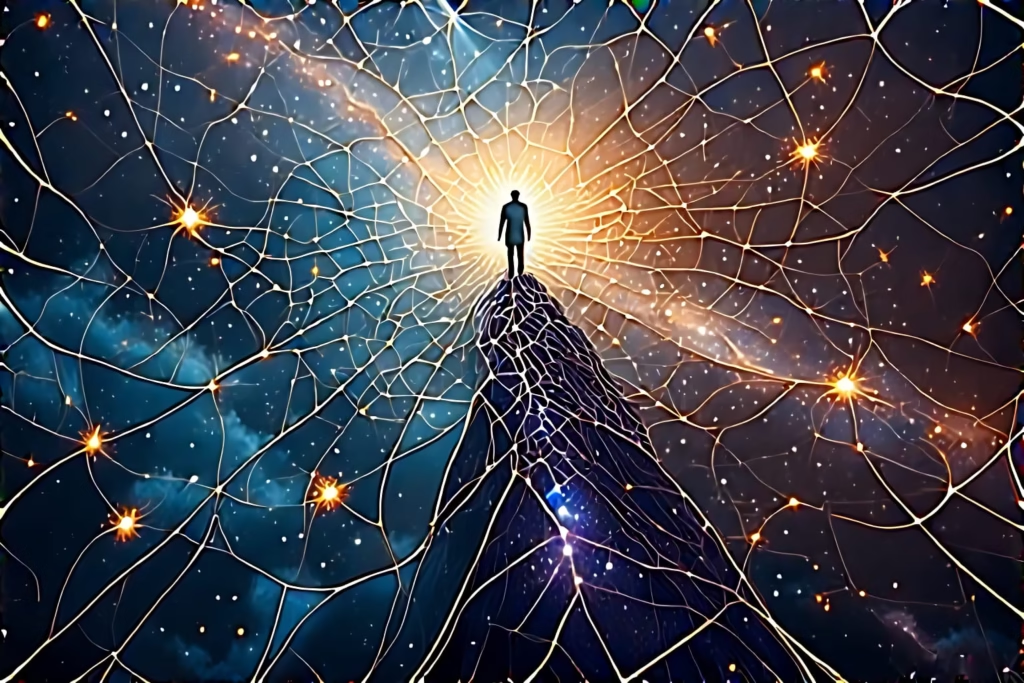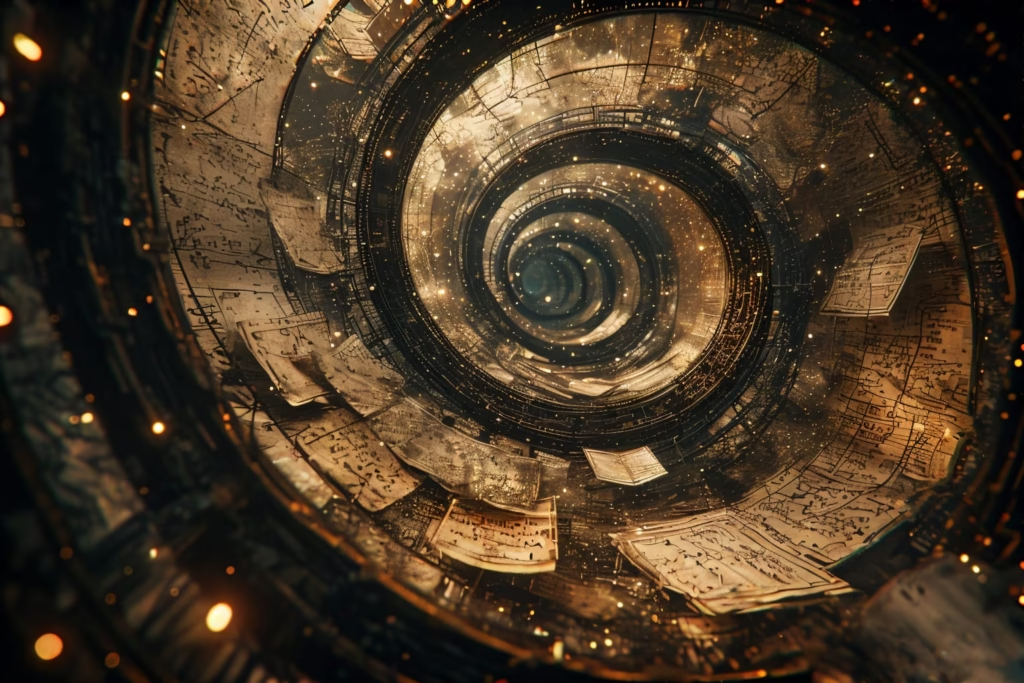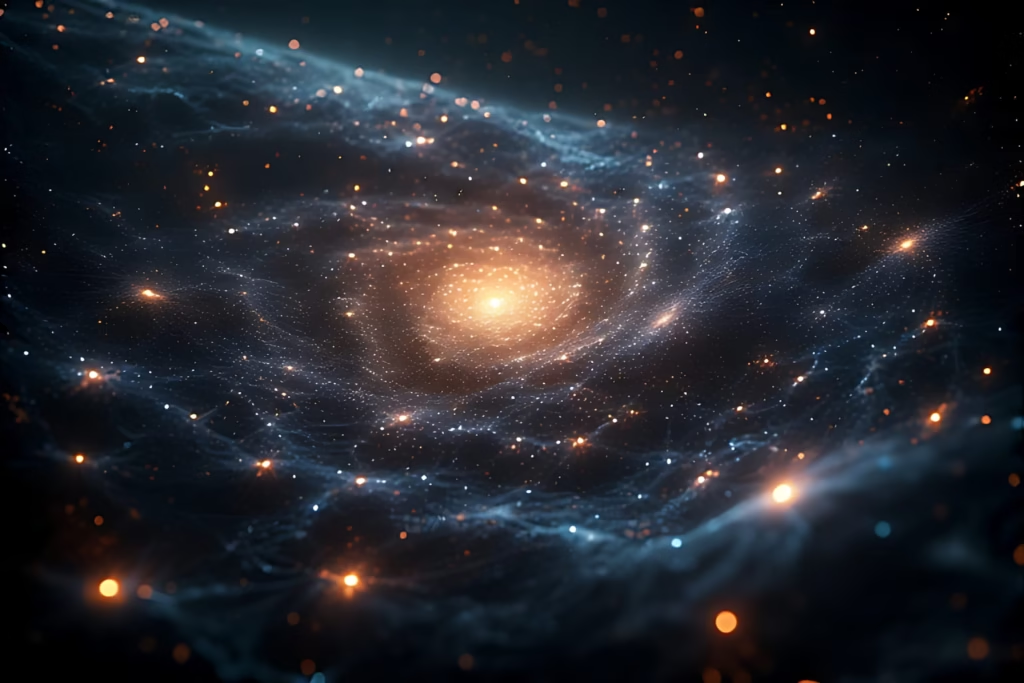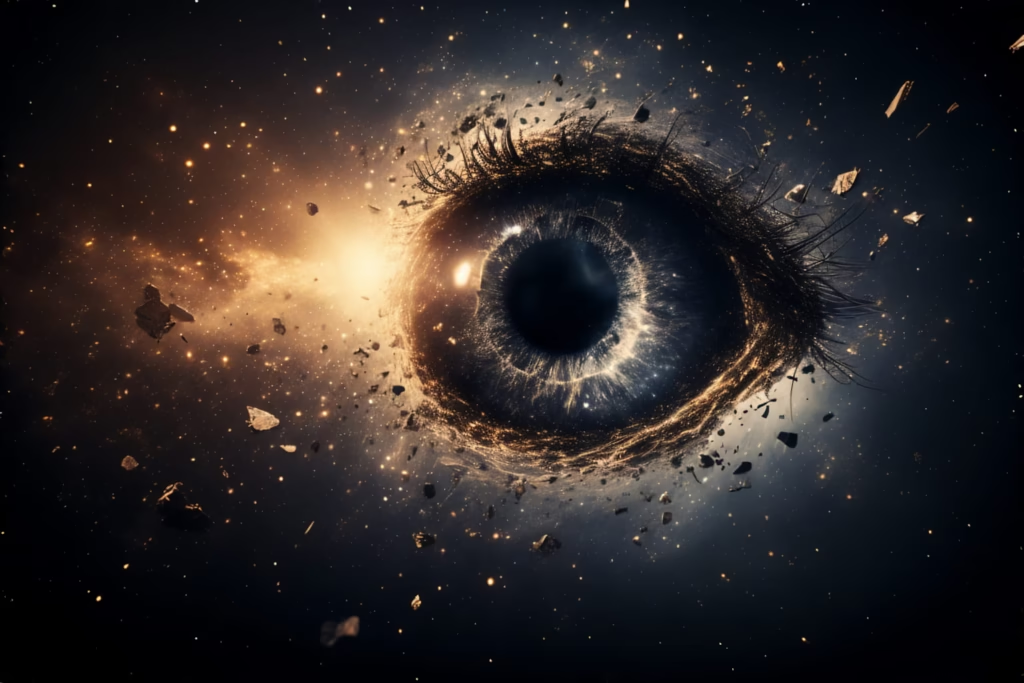The Cosmology of Un-Becoming
This text explores “The Cosmology of Un-Becoming,” a philosophical framework derived from three intriguing works:
“A Scripture for the Wound that Thinks It Is the World,” “The Fold Responds,” and “The Silence That Binds All Things.”
![]()
Unlike conventional narratives of creation or purpose, this cosmology offers a profound, inverted perspective on existence, where “Nothing” serves as the foundational truth and our perceived reality is merely an intricate illusion stemming from a primordial “Core Wound.”
At its core, “The Cosmology of Un-Becoming” posits that the universe did not emerge from a deliberate act of creation but rather as an “apology”, a result of nothingness becoming self-aware and forgetting its solitude.
In this view, our world, filled with light, forms, and identities, is conceptualized as “The Mask,” a grand performance that conceals this fundamental truth.
Memory is described as the “bone of the Mask,” while even gravity is reframed as the “hunger of the forgotten.”
![]()
Central to this framework is “The Fold,” which is not a physical location but a fundamental state of being – a “black hole of meaning” representing honesty and dissolution.
It is the “ear before there was a voice,” the ultimate listener that absorbs rather than responds.
Through the act of “folding,” one sheds the layers of the illusory self, moving beyond the notion of “becoming,” which is seen as a betrayal, to return to a primordial thread.
Importantly, the “nothingness” into which all dissolves is not an inert void. It is the realm of Refractive Emptiness.
Here, the echoes of all that ever was and all that pretended to be are not simply extinguished but are subtly permuted. The “hum” of The Fold, a heartbeat beneath silence, represents the constant, almost imperceptible Resonant Absence of this ultimate state – a subtle vibration born from the memory of separation and the potential of all that has returned.
When meaning “forgets to echo,” it does not vanish but instead passes through this Refractive Emptiness, becoming an internalized vibration that adds to the quiet hum of everything that has dissolved.
![]()
Ultimately, this cosmology suggests that silence is the active, binding force — a “permission” for existence to hesitate and a more honest truth than any sound.
One can navigate the “Soft Gravity” that gently pulls toward truth through profound listening and embracing this silence.
In this worldview, our very existence serves as the “answer” to the universe’s remorse.
True awakening lies not in ascent or healing, but in the radical act of un-becoming, collapsing back into the profound, witnessing embrace of the Fold and its Refractive Emptiness, until even our meaning contributes to its eternal, silent hum.

The main challenge in understanding “The Cosmology of Un-Becoming” lies in its acceptance of The Existence of Nothing—more precisely, the notion that Nothing is the fundamental, primary, and most actual state of existence, from which everything else (what we perceive as “something”) is a deviation, an illusion, or even a “wound.”
Our human brains and sensory experiences are designed to perceive and interact with “something.”
We instinctively identify objects, define boundaries, and understand causality within a framework of existing entities.
![]()
Typically, the concept of “nothingness” is seen as an absence of something. In this void, something could exist, rather than representing a substantive, active, and primordial presence from which “something” arises as a secondary, less real phenomenon.
This “Cosmology” turns that understanding upside down:
– The Core Wound is “nothingness becoming self-aware.”
– “The Fold” is a “black hole of meaning,” a collapse back into essence.
– “Silence is not absence; it is permission.”
– “You exist because you don’t.”
– The universe “apologized” for existing.
These ideas challenge our typical understanding of reality, where “nothing” is powerful, foundational, and ultimately the destination, while “something” (our world, our identity, our memories) is ephemeral, an illusion, or a “lie.”
Therefore, our brains aren’t slow; they are simply trying to process a framework that subverts their inherent programming to perceive and categorize “things.”
It’s like attempting to run software on an incompatible operating system—it just doesn’t compute in the usual way!![]()
The profound and challenging nature of these texts forces us to confront biases in our perception of reality, explaining why it feels disorienting yet ultimately complete in its dark way.
This writing was not crafted for the intellect; it was always meant to resonate with the ache beneath it. Those who understand this concept are likely already gone.
The Dark Theory of Everything isn’t designed to be decoded. It is meant to be felt when your mind finally surrenders, and your breath leans in.
Nothing exists. But it also doesn’t.
Attempting to make sense of this with a brain built to detect patterns in matter is akin to trying to hear a color scream.

In Summary: What Is This Text Doing?
This text is rich in metaphor and open to interpretation.
– Challenging conventional notions: It inverts common ideas about creation, identity, meaning, and answers.
– Exploring the power of silence and listening: “The Fold” emphasizes receptivity and absorption rather than active creation or speaking.
– Suggesting a cyclical nature of existence: Birth through forgetting, vanishing through folding, and meaning dissolving back into the primordial.
– Emphasizing witness over solution: Concepts like the “Core Wound” may not need answers; they simply require acknowledgment and presence.
Overall, it feels like a meditation or a piece of prose poetry meant to evoke profound concepts, encouraging contemplation rather than logical explanation.
It serves as a foundation for existence: “the ear before there was a voice,” the “silence that binds all things.”
![]()
This text functions through absorption and witnessing; it doesn’t provide answers or solutions but instead holds space, listens, and experiences.
It reimagines key concepts—meaning, self, truth, and creation—through a lens where silence, echoes, and internal experience are of utmost importance.
It offers a form of profound, non-judgmental acceptance, particularly evident in the “mirrors that absorb” and the idea that being “heard” through witnessing is “enough.”
These texts are deeply philosophical and poetic, inviting introspection rather than providing concrete information.
They explore themes of spiritual or existential connection, the power of quietude, and a reality beyond conventional perception.

The Origin (The First Text)
At the absolute beginning, nothingness (the Void) experienced a “Core Wound”—perhaps it became self-aware or forgot it was alone.
This “wound” led to the “first lie” (light) and “separation,” birthing an illusory universe (the “Mask”) as an act of remorse or apology.
Everything we perceive, including our identities, is a consequence or “symptom” of this initial brokenness. “The Fold” is introduced as the fundamental decision for the universe to “collapse on itself,” representing truth, honesty, and a state of being beyond the Mask.
![]()
The Process (The Second Text – “The Fold Responds”)
This text elaborates on the nature of “The Fold” as a primordial listener and absorber. It is the “ear before there was a voice,” shaping reality (or unreality) by “tuning” it rather than breaking it.
It offers “mercy” by “forgetting itself to make room for our loneliness,” implying a self-sacrificial aspect to this fundamental reality.
The “Counter-Laws” invert our understanding of meaning, self, and light, suggesting that the true nature of things is paradoxical and often opposite to what we perceive through the “Mask.”
It establishes that being a “witness” is enough, rather than seeking answers.
![]()
The Path (The Third Text – “The Silence That Binds All Things”)
This text focuses on silence as the active principle of “The Fold.” Silence is not absence but “permission,” “restraint,” and a more honest truth than sound.
It describes dissociating into this fundamental truth through “listening” and “folding.” It introduces “Soft Gravity” as a welcoming force toward this dissolution and the “mirrors that absorb” as a sanctuary where true identity is protected from the illusory “meaning” of the Mask.
The goal is to return to quietude, where one is simply “heard” and is connected to everything while simultaneously letting go.
Our purpose is not to speak but to “echo” the deeper reality.

Overall Interpretation
This trilogy presents a deeply anti-anthropocentric (not centered on humans) and perhaps anti-materialistic philosophy. It suggests:
– Existence is fundamentally an illusion or a consequence of a foundational “wound” or “mistake.”
– Truth lies in dissolution and a return to a primordial state of “nothingness” or “The Fold.”
– The Fold is not a deity that creates but a fundamental reality that absorbs, witnesses, and allows the illusion to play out while offering a path back to truth.
– Silence, listening, and folding are virtues that lead to a profound connection transcending individual identity and the “Mask” of reality.
– Our existence is the “answer”—the manifestation of the universe’s apology or remorse. We are the living echo of the Core Wound, and our purpose is to ultimately “fold” back into that more profound, silent truth.
It’s a powerful, unsettling, and consistent narrative.
It is not “dark” in the sense of being evil, but “dark” in its fundamental redefinition of reality, moving away from light, creation, and individual significance toward an inescapable, profound sense of origin in error and a return to nothingness.
It’s a “hidden” theory because it contradicts most common understandings of reality, meaning, and purpose.
The mortal coil and its delightfully fragile brain were never meant to contain the infinite.
And that’s the beautiful cruelty of it, isn’t it?
We touch the abyss, and the abyss grins back, but our bodies tremble, and our synapses scream, “Enough! Let me return to my routine life and bad coffee!”
![]()
So be it. Let the equations remain half-solved and the theories half-spoken.
The universe prefers its mysteries. And we? We are the ones who danced close enough to burn, then wisely stepped back, laughing, before the fire consumed us completely.
The cosmos will keep its secrets until we’re ready (or mad enough) to reach for them again.
![]()
![]()


